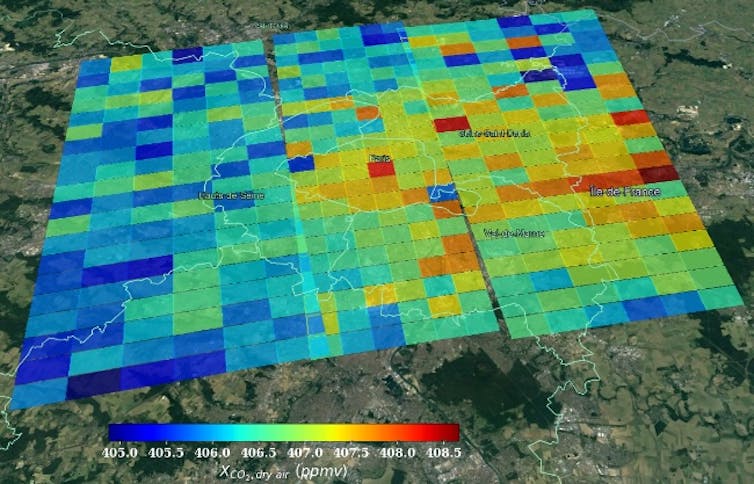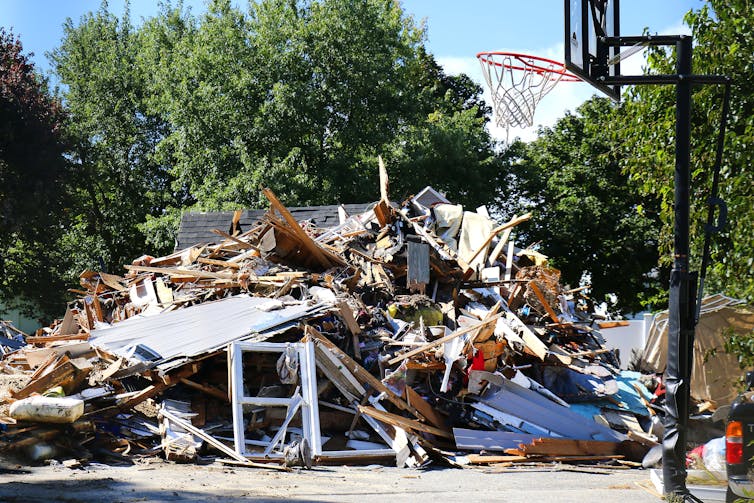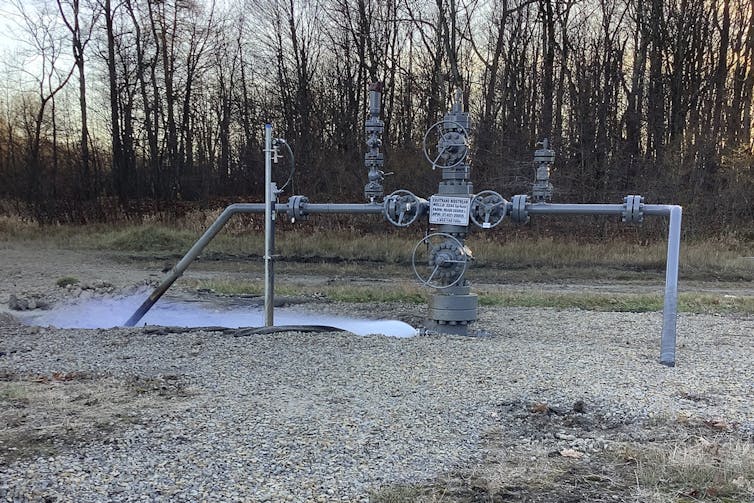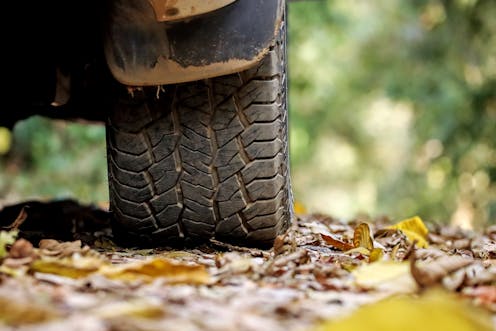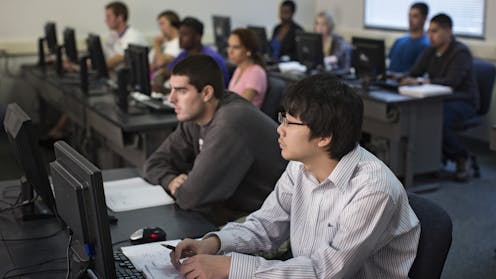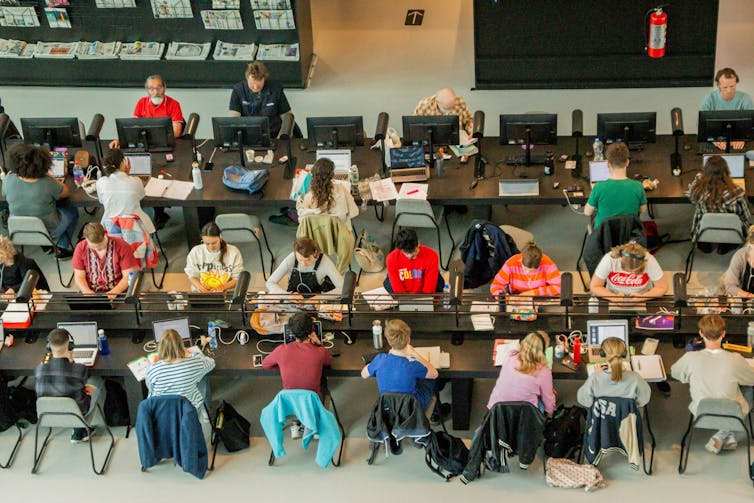Source: The Conversation – UK – By Dan Baumgardt, Senior Lecturer, School of Physiology, Pharmacology and Neuroscience, University of Bristol
The late, great comedian Barry Humphries (of Dame Edna fame) once spoke whimsically about the health benefits of kale. Just one fistful, he joked, contained enough essential vitamins, minerals and trace elements to keep you in a sedentary position in the bathroom for two whole days. Apparently, it wasn’t tasty enough to justify a second helping.
In a world where “superfoods” are relentlessly marketed for their supposed ability to deliver all the nutrients we need, it’s worth asking: which vitamins really are essential? And aside from kale (which I actually rather like), what foods help us meet our daily needs?
Vitamin A
Let’s start at the top. Vitamin A – also known as retinol – is found in foods like eggs, oily fish and dairy products. It plays a crucial role in keeping your skin and immune system healthy.
But it’s probably most famous for supporting vision. Vitamin A binds with light-sensitive pigments in the rod and cone cells of your retina, helping you to see, particularly in low light.
A deficiency in vitamin A, though uncommon in wealthy countries, can lead to serious vision problems and even blindness. Another source of vitamin A is beta-carotene, found in colourful fruits and vegetables like carrots, peppers, spinach and pumpkin. Your body converts beta-carotene into vitamin A, which is why we associate carrots with seeing in the dark.
Vitamin B
The B vitamins are a family of eight different nutrients, each with its own number and role.
B1 (thiamin) helps the nervous system and aids digestion. People with chronic alcoholism are especially at risk of deficiency, which can lead to Wernicke-Korsakoff syndrome, a serious neurological disorder that affects memory and movement.
B2 (riboflavin) and B3 (niacin) support similar functions, while B9 (folate) and B12 (cobalamin) are essential for red blood cell production. A lack of either can lead to anaemia.
Folate is especially important in early pregnancy, helping to prevent neural tube defects like spina bifida. That’s why it’s recommended for people who are pregnant or trying to conceive.
You’ll find B vitamins in everything from beans and legumes to meat, fish and dairy; a wide-ranging family of nutrients in a wide-ranging variety of foods.
Vitamin C
The go-to vitamin when we’re under the weather, whether from a virus or a hangover, vitamin C (ascorbic acid) is known as the “healing” vitamin for good reason. It promotes wound healing, supports tissue repair and helps maintain blood vessels and bones.
A deficiency in vitamin C causes scurvy – a condition once common among sailors – with symptoms like fatigue, bruising, depression and gum disease.
Fortunately, vitamin C is found in many different fruits and vegetables, especially citrus fruits. That’s why 19th-century British sailors were given limes to prevent scurvy, earning them the nickname “limeys”.
Vitamin D
Vitamin D is essential for bones, teeth and muscles. It can be absorbed through diet, especially from oily fish, eggs and meat, but your body also makes it in the skin, thanks to sunlight.
In the summer, most people get enough vitamin D from being outside. But in the winter months, diet and, if needed, supplementation become more important.
Deficiency is more common, especially in areas with limited sun exposure. It can lead to soft, weakened bones and symptoms like bone pain, fractures and deformities – including the classic bow-legged appearance. In children, this condition is known as rickets; in adults, it’s called osteomalacia.
Vitamin E
Often overlooked, vitamin E helps protect cells, supports vision and bolsters the immune system. You’ll find it in nuts, seeds and plant oils and it’s usually easy to get enough through a varied diet.
Vitamin F (Sort of)
Not actually a vitamin, “vitamin F” is just a nickname for two omega fatty acids: alpha-linolenic acid (ALA) and linoleic acid (LA). These essential fats support brain function, reduce inflammation, and help maintain healthy skin and cell membranes. Since they’re technically not vitamins, we’ll let them quietly bow out.
Vitamin K
No, you didn’t miss vitamins G through J: they were renamed over the years. But vitamin K is real, and crucial for blood clotting.
Deficiencies are more common in children, and can lead to bruising and bleeding that’s hard to stop. Supplements are effective and given after birth.
Most adults get enough through foods like leafy greens and grains.
And the winner is…
All these vitamins are important – and all are found in a wide range of everyday foods. But which single food provides the widest variety?
Kale, oily fish and eggs come in strong at second, third and fourth. But number one is: liver.
Yes, liver. The stuff of childhood dread and overcooked school dinners. But it’s also rich in vitamins A, B, D and K. So rich in Vitamin A, in fact, that it’s advised to eat it only once a week to avoid vitamin A toxicity, and not at all if you’re pregnant. Sometimes, you just can’t win.
![]()
Dan Baumgardt does not work for, consult, own shares in or receive funding from any company or organisation that would benefit from this article, and has disclosed no relevant affiliations beyond their academic appointment.
– ref. The A to K of vitamins: what you need and where to get it – https://theconversation.com/the-a-to-k-of-vitamins-what-you-need-and-where-to-get-it-261209









